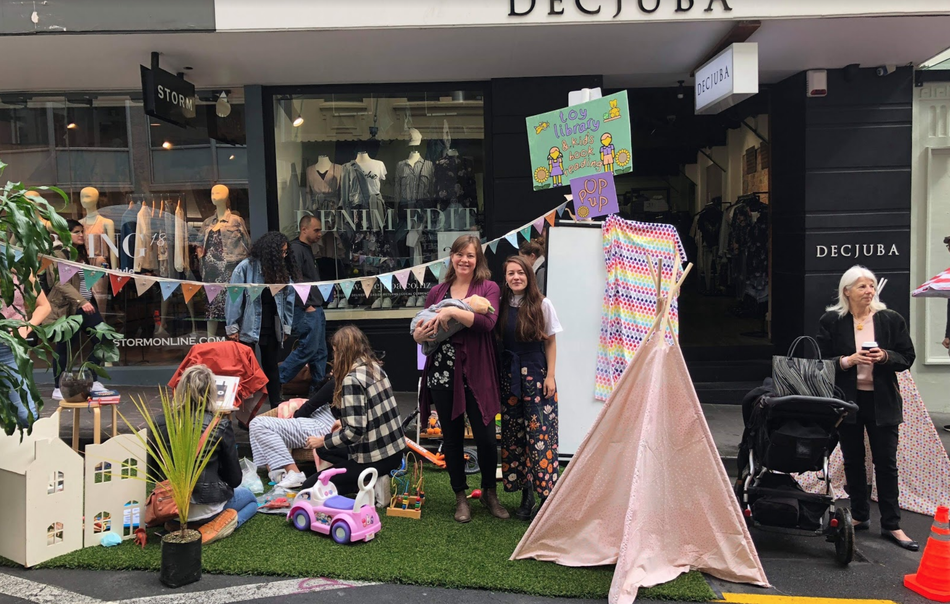A coming of age, part two: Women In Urbanism on how to create a safer Auckland city

- Read the first column in this series, ‘A coming of age: How Auckland City can flourish from an angsty teenager into a young adult’ here.
“We can build all the buses and trains we want but if people aren’t feeling safe, they’re not going to use them” are the words of Women In Urbanism member Rachel Lees-Green, which rings very true in Auckland city. Equitable transport is not simply limited to what we build, but how we design for diversity. It has been identified, for example, that less women feel safe to walk through the city space at night – or use shared transport methods – because they feel at risk of harassment and assault. Fellow member of Women In Urbanism, Sara Bekhit, argues this issue requires a cultural change.
“I think that our community needs to stand up against harassment. We need to be braver to speak about it, to acknowledge the fact that this happens. I also think a major problem is that it is really hard to report sexual assault, you have to navigate through multiple portals, to get to a webpage that tends to lag and won’t work.
“Also, a lot of people don’t know that you can report harassment. To decrease or solve this issue, the first thing we need to acknowledge this as a problem, and stand up for it, because people turn a blind eye. That is where we start.”

Bekhit signals the different patterns of movement between men and women, where men tend to travel between home and work at set times via car or public transport, while women are more likely to carry out random short trips by foot throughout the day.
“Our investments need to make more sense – women and people who have little transport choice take public transport more, designing more open spaces. Women and children being in the CBD, designing more spaces for them, so they are not constantly in danger.”
A cultural change could also be helped with re-considered urban design. For example, additional lighting can be implemented to allow women, children, or elderly to walk through the street safely at night, or sidewalks could be widened to allow ease of movement among pedestrians on narrow streets. Bekhit points to other examples of urban design schemes, such as building outside furniture made from recycled materials, or organising pop-up activations, to help the city to become a more vibrant and inclusive space.
Bekhit says, “We need to start thinking of everyone, people with disabilities, elderly, women and children in the CBD, we need to create an eight to 80 community where eight-year-olds and 80-year-olds can co-exist in the same city with accessibility for everybody.”
One city that embodies this philosophy is Vienna. The Austrian capital was shaped by women – trailblazers of the ‘gender mainstreaming’ movement in urban planning – for women.
According to The Guardian, to ensure a more equitable city, the city altered traffic lights to prioritise pedestrians, installed extra public benches across the city to provide relief for walkers, and more than a kilometre of pavement was widened (to allow for two prams crossing paths at one time), plus a host of other public amenities were installed, including high density social housing projects, which Bekhit says, are designed around the complex lives of women and mothers.
“Here’s the thing, if you build a city for the needs of women (this means investing in public transport, walking, cycling and safer more inclusive public spaces) you make happier, healthier citizens, because these investments help connect us to each other, and they subtly promote physical activity which is super good for our mental and physical health. (This, instead of spending hours a day, sitting in a metal box on the northwestern).”
Furthermore, Bekhit points to the fact that, if women feel safe and welcome in urban environments they’re more likely to stay longer and spend money. It aligns with the benefits of pedestrian friendly streets, where a diversity of people can engage with the community, which is also profitable for local retailers.
Although there is much work to be done to ensure Auckland is a safer city, down some avenues, this philosophy meets the council’s, which has plans to roll out extra public transport networks, pedestrianise streets, and implement a series of small scale cheap and quick forms of tactical urbanism.




